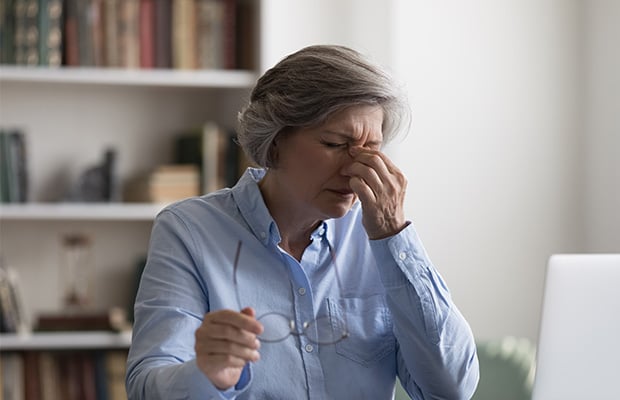What is PoTS?
Postural tachycardia syndrome (PoTS) – sometimes called postural orthostatic tachycardia syndrome – is a condition that causes a sudden increase in heart rate when sitting or standing up.
When you move upright, gravity makes some of your blood flow downwards in your body, which leads to a drop in blood pressure.
Normally, your body responds by narrowing your blood vessels and slightly increasing your heart rate to increase blood pressure and keep blood flowing to your heart and brain.
But if you have PoTS, these automatic changes in your blood vessels do not happen.
This means the supply of blood to your heart and brain changes when you sit or stand up, so your heart beats very fast to try to make up for this.
PoTS symptoms
After standing or sitting up, you may experience:
Other symptoms include:
- gut problems, such as nausea, diarrhoea, bloating or constipation
- purple hands and feet (known as peripheral acrocyanosis)
- tiredness and weakness
- brain fog (difficulty thinking or concentrating)
- problems sleeping
- headaches.
You may find your symptoms are worse:
- in the morning
- after eating
- during or after exercise
- when you’re on your period
- when you’re dehydrated.
Some people’s symptoms are mild, while others find the symptoms have a big impact on their life.
What to do when you feel faint
If you suddenly feel faint or dizzy, you can try to stop the drop in blood flow by lying down and raising your legs if possible.
If you cannot lie down, try:
- crossing your legs in front of each other
- rocking up and down on your toes
- clenching your buttocks, tummy muscles and fists.
Causes of PoTS
PoTS is caused by a problem in the autonomic nervous system, which controls important body functions, such as your heart rate and breathing, without you having to think about them.
We do not fully understand yet why this part of the nervous system does not work the way it should in people with PoTS.
It’s thought that, in some cases, PoTS may be triggered by a bacterial or viral infection such as Covid-19 or glandular fever, pregnancy, surgery or a traumatic event.
PoTS after Covid-19
There is evidence that some people with long Covid (when Covid-19 lasts for months after infection) experience similar symptoms to people with PoTS.
A study published in March 2024 in the Journal of Medical Virology found around half of 277 people diagnosed with long Covid had symptoms such as dizziness, palpitations and fatigue while standing for 10 minutes, compared to none of the 50 healthy volunteers also included in the study.
Seven per cent of the people with long Covid in the study met the criteria for a PoTS diagnosis based on clinical guidelines.
If you have PoTS-like symptoms after having Covid-19, speak to your doctor.
They can make sure you’re correctly diagnosed and receive treatment if you need to.
Diagnosing PoTS
If you're experiencing symptoms or think you may have PoTS, make an appointment to see your GP.
Your doctor will ask you about your symptoms and arrange some tests to help diagnose PoTS and rule out other conditions.
These include the active stand test, where your heart rate and blood pressure are measured after you move to an upright position. You may also be given an ECG (electrocardiogram), ultrasound of your heart (echocardiogram) and various blood tests.
If the diagnosis is unclear, your GP may refer you to a specialist for further tests, including a tilt test.
Dealing with symptoms of PoTS
There is no cure for PoTS, but it can often improve over time.
Lifestyle measures can also help to reduce symptoms.
These include:
- drinking plenty of fluids
- sitting or standing up slowly
- raising the head of your bed so you’re not fully horizontal at night
- cutting down on caffeine or alcohol
- avoiding standing for long periods of time
- wearing compression stockings
- eating more salt (this is not recommended for everyone, so check with your doctor first).
While exercise can trigger symptoms, staying active may help some people in the long term by improving blood flow.
Try exercises you can do lying or sitting down, such as swimming or rowing, and gradually build these up over time.
Make sure to pace yourself and take things slowly if you need to.
If you have severe and prolonged symptoms after exercise, speak to an expert before you start about whether you should exercise and how to do it.
PoTS treatments
If you are still having symptoms despite making lifestyle changes, your doctor may suggest taking some medicine.
This may include:
- Ivabradine, to slow the heart rate.
- Midodrine, which narrows the blood vessels.
- Fludrocortisone, which retains salt to increase your blood volume.
- A small dose of a beta blocker, such as propranolol or bisoprolol.
- Pyridostigmine.
What to read next...








